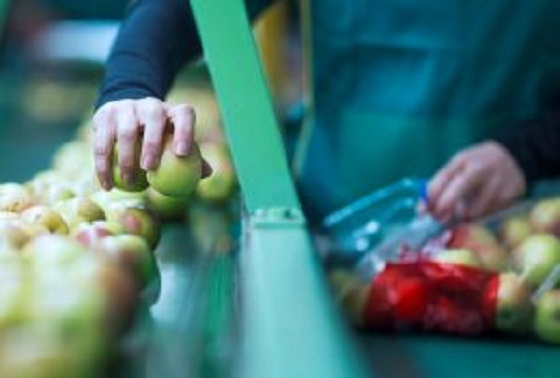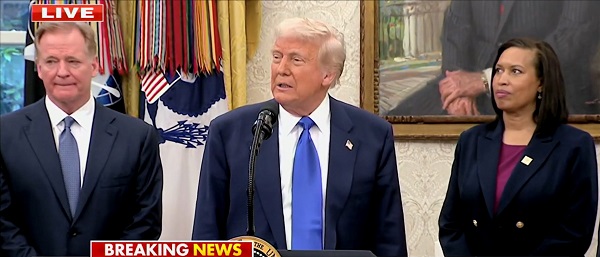Energy
From Sippy Cups to Solar Panels: Why a Blanket Ban on Plastics Misses the Mark

From EnergyNow.ca
By Canada Powered by Women
Repeated attempts by the federal government to implement a sweeping ban on plastics don’t consider the crucial role plastics play in the lives of Canadians and energy transformation.
Plastic is in many products we need every day, including medical equipment, headphones, car seats, menstrual products and computers. For mothers enjoying summer with their kids — don’t forget sippy cups, running shoes and diapers (to name a few).
In Canada, as many as 70,000 plastic products are made every day. They are essential, whether we’re working, having fun or simply trying to go about our daily lives.
The chemistry and plastics sector is also the third largest manufacturing sector in Canada, employing more than 190,000 people and shipping more than $108 billion in products in 2022.
So, this fall when the Appeals Court revisits the federal government’s move that labelled many plastics as “toxic”, engaged women from across the country are going to be watching.
They’re watching because the use of plastic touches many areas of their personal lives and interests.
Plastic is a critical component in the energy transformation (which we know engaged women care a lot about) and it’s intricately connected to the development and deployment of renewable energy technologies. These are important considerations for our country’s broader energy policy and sustainability goals, and engaged women are paying attention because they’re not convinced Canada has energy policies that positively affect prosperity.
Engaged women in Canada have also told us they want a balanced approach on the environment, energy and economic prosperity. As a result, their understanding of policies is deepening, and they are focusing on long-term prosperity and affordability while striving for a well-rounded strategy when it comes to policymaking.
So how did we get here with the plastics issue, and what happens next?
The single-use plastic ban that started it all
In 2019, the federal government announced it would seek to ban single-use plastic items such as straws, cutlery, take out containers, stir sticks and plastic bags to reduce plastic waste.
The ban came into effect in 2022 after the federal government added all plastic manufactured items (PMIs) to a toxic substance list (a key step in allowing it to ban these items).
Waste management is a provincial responsibility, but the federal government is able to regulate substances for environmental protection if they are listed as toxic under the Canadian Environmental Protection Act.
In 2023, a federal court reviewed the legislation after complaints surfaced saying Ottawa failed to demonstrate enough scientific evidence to justify the sweeping regulations.
The court agreed, ruling that the federal government exceeded its authority by listing all PMIs as toxic, calling the move “unreasonable and unconstitutional”.
The federal government appealed the decision, and on June 25-26 this year, the Federal Appeals Court heard arguments for and against listing all PMIs as toxic.
A decision on the appeal is expected this fall, and the outcome of the ruling has many concerned about what future bans and other restrictive regulations and policies will mean for everyday Canadians.
How plastics restrictions could hurt Canadians
Christa Seaman, vice-president of the plastics division with the Chemistry Industry Association of Canada, says further restrictions on using plastic will have serious ramifications.
“If we start to take away plastic packaging that’s keeping our food safe, for example, you’ll actually see increased cost to consumers because food is going to spoil before it gets to market or shipping is going to be more expensive because the packaging for the products are going to weigh more,” says Seaman.
Seaman also highlights restrictions on plastics could limit the availability of certain products that rely on plastic packaging or components, and Canadians may have reduced access to the variety of inexpensive goods we use today.
Plastics play a big role in low-carbon technology development
There are sustainable ways to keep plastics out of the environment and in the economy, Seaman says, particularly because of the key role they’re already playing in the proliferation of green technologies.
For example, batteries in electric vehicles (EVs) are heavier than in vehicles with internal combustion engines so plastics are being used to manufacture EVs.
“Plastics, being lightweight and durable, are key to keeping the weight of the vehicle down,” she says. “We have less wear and tear on our roads and we’re actually able to increase the driving range per charge, without compromising safety at all.”
Plastics also make renewable energy sources like wind and solar possible, Seaman says. They are a key component in solar panels, and blades of wind turbines are made with fibreglass and other plastic composite materials.
Rather than an outright ban on plastics, we’d be better off exploring how a circular economy — one that includes the appropriate use, reuse and recycling of plastics — can keep plastic waste out of the environment and create a more sustainable future.
Some provinces and territories have also initiated an important shift in responsibility by making producers of plastic products responsible for funding their collection and recycling, Seaman says.
“Provinces are setting the guidelines on achieving certain benchmarks and targets for recyclability, which will go back to how the products are designed,” she says. “The cheaper and easier it is to recycle, the less they’re going to have to spend on the recycling system in the end.”
Seaman says the industry goal is to focus on reduction first by making packaging smaller or thinner. Then the focus turns to reusing plastics, and once those options are exhausted the goal is to recycle.
What we need from policymakers
Listing all plastics as toxic, and then implementing bans around their use, is heavy-handed and misguided.
Seaman says a collaborative approach between policymakers and producers is what’s needed now, and policy should reflect what’s best for the public, the environment and the economy.
“We need all solutions to be on the table: your compostable, your biodegradable, your advanced recycling, your mechanical recycling.”
Seaman says the focus should be placed on outcome-based regulations and science.
“Let’s talk about the outcomes we’re all trying to achieve, because nobody wants to see plastics in the environment, in the waterways or in landfill. Let’s look at what targets need to be and find a way to get there together.”
Automotive
Federal government should swiftly axe foolish EV mandate

From the Fraser Institute
Two recent events exemplify the fundamental irrationality that is Canada’s electric vehicle (EV) policy.
First, the Carney government re-committed to Justin Trudeau’s EV transition mandate that by 2035 all (that’s 100 per cent) of new car sales in Canada consist of “zero emission vehicles” including battery EVs, plug-in hybrid EVs and fuel-cell powered vehicles (which are virtually non-existent in today’s market). This policy has been a foolish idea since inception. The mass of car-buyers in Canada showed little desire to buy them in 2022, when the government announced the plan, and they still don’t want them.
Second, President Trump’s “Big Beautiful” budget bill has slashed taxpayer subsidies for buying new and used EVs, ended federal support for EV charging stations, and limited the ability of states to use fuel standards to force EVs onto the sales lot. Of course, Canada should not craft policy to simply match U.S. policy, but in light of policy changes south of the border Canadian policymakers would be wise to give their own EV policies a rethink.
And in this case, a rethink—that is, scrapping Ottawa’s mandate—would only benefit most Canadians. Indeed, most Canadians disapprove of the mandate; most do not want to buy EVs; most can’t afford to buy EVs (which are more expensive than traditional internal combustion vehicles and more expensive to insure and repair); and if they do manage to swing the cost of an EV, most will likely find it difficult to find public charging stations.
Also, consider this. Globally, the mining sector likely lacks the ability to keep up with the supply of metals needed to produce EVs and satisfy government mandates like we have in Canada, potentially further driving up production costs and ultimately sticker prices.
Finally, if you’re worried about losing the climate and environmental benefits of an EV transition, you should, well, not worry that much. The benefits of vehicle electrification for climate/environmental risk reduction have been oversold. In some circumstances EVs can help reduce GHG emissions—in others, they can make them worse. It depends on the fuel used to generate electricity used to charge them. And EVs have environmental negatives of their own—their fancy tires cause a lot of fine particulate pollution, one of the more harmful types of air pollution that can affect our health. And when they burst into flames (which they do with disturbing regularity) they spew toxic metals and plastics into the air with abandon.
So, to sum up in point form. Prime Minister Carney’s government has re-upped its commitment to the Trudeau-era 2035 EV mandate even while Canadians have shown for years that most don’t want to buy them. EVs don’t provide meaningful environmental benefits. They represent the worst of public policy (picking winning or losing technologies in mass markets). They are unjust (tax-robbing people who can’t afford them to subsidize those who can). And taxpayer-funded “investments” in EVs and EV-battery technology will likely be wasted in light of the diminishing U.S. market for Canadian EV tech.
If ever there was a policy so justifiably axed on its failed merits, it’s Ottawa’s EV mandate. Hopefully, the pragmatists we’ve heard much about since Carney’s election victory will acknowledge EV reality.
Daily Caller
Trump Issues Order To End Green Energy Gravy Train, Cites National Security


From the Daily Caller News Foundation
By Audrey Streb
President Donald Trump issued an executive order calling for the end of green energy subsidies by strengthening provisions in the One Big Beautiful Bill Act on Monday night, citing national security concerns and unnecessary costs to taxpayers.
The order argues that a heavy reliance on green energy subsidies compromise the reliability of the power grid and undermines energy independence. Trump called for the U.S. to “rapidly eliminate” federal green energy subsidies and to “build upon and strengthen” the repeal of wind and solar tax credits remaining in the reconciliation law in the order, directing the Treasury Department to enforce the phase-out of tax credits.
“For too long, the Federal Government has forced American taxpayers to subsidize expensive and unreliable energy sources like wind and solar,” the order states. “Reliance on so-called ‘green’ subsidies threatens national security by making the United States dependent on supply chains controlled by foreign adversaries.”
Dear Readers:
As a nonprofit, we are dependent on the generosity of our readers.
Please consider making a small donation of any amount here.
Thank you!
Former President Joe Biden established massive green energy subsidies under his signature 2022 Inflation Reduction Act (IRA), which did not receive a single Republican vote.
The reconciliation package did not immediately terminate Biden-era federal subsidies for green energy technology, phasing them out over time instead, though some policy experts argued that drawn-out timelines could lead to an indefinite continuation of subsidies. Trump’s executive order alludes to potential loopholes in the bill, calling for a review by Secretary of the Treasury Scott Bessent to ensure that green energy projects that have a “beginning of construction” tax credit deadline are not “circumvented.”
Additionally, the executive order directs the U.S. to end taxpayer support for green energy supply chains that are controlled by foreign adversaries, alluding to China’s supply chain dominance for solar and wind. Trump also specifically highlighted costs to taxpayers, market distortions and environmental impacts of subsidized green energy development in explaining the policy.
Ahead of the reconciliation bill becoming law, Trump told Republicans that “we’ve got all the cards, and we are going to use them.” Several House Republicans noted that the president said he would use executive authority to enhance the bill and strictly enforce phase-outs, which helped persuade some conservatives to back the bill.
-

 International2 days ago
International2 days agoSecret Service suspends six agents nearly a year after Trump assassination attempt
-

 Bruce Dowbiggin1 day ago
Bruce Dowbiggin1 day agoThe Covid 19 Disaster: When Do We Get The Apologies?
-

 Crime23 hours ago
Crime23 hours agoSweeping Boston Indictment Points to Vast Chinese Narco-Smuggling and Illegal Alien Labor Plot via Mexican Border
-

 Alberta1 day ago
Alberta1 day agoAlberta school boards required to meet new standards for school library materials with regard to sexual content
-

 Automotive2 days ago
Automotive2 days agoAmerica’s EV Industry Must Now Compete On A Level Playing Field
-

 Environment23 hours ago
Environment23 hours agoEPA releases report on chemtrails, climate manipulation
-

 Business12 hours ago
Business12 hours agoTrump slaps Brazil with tariffs over social media censorship
-

 Business2 days ago
Business2 days ago‘Experts’ Warned Free Markets Would Ruin Argentina — Looks Like They Were Dead Wrong




